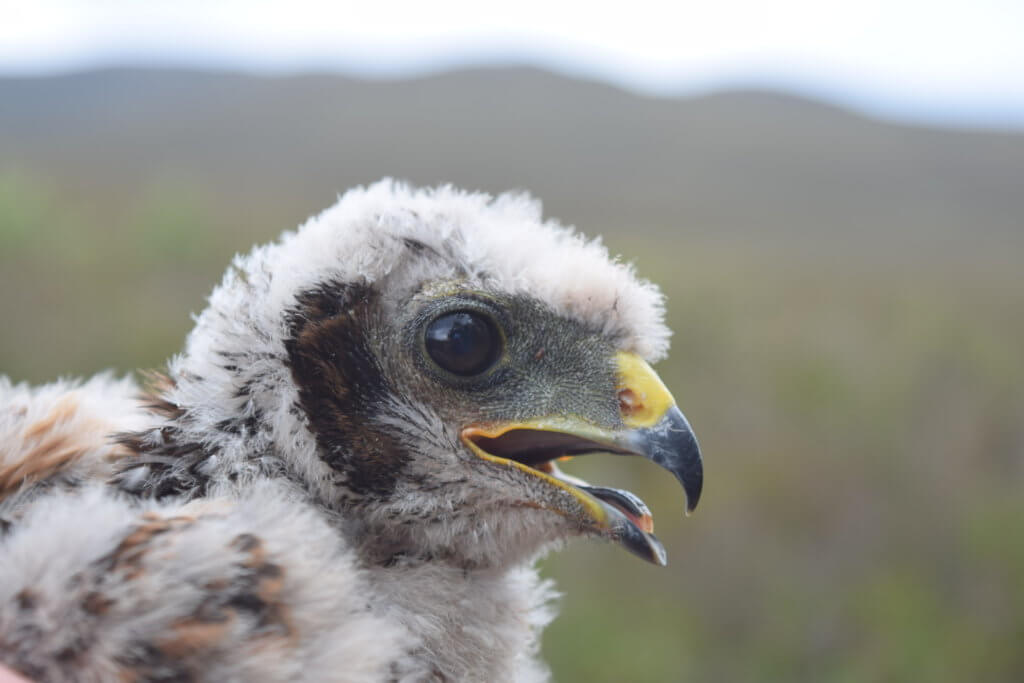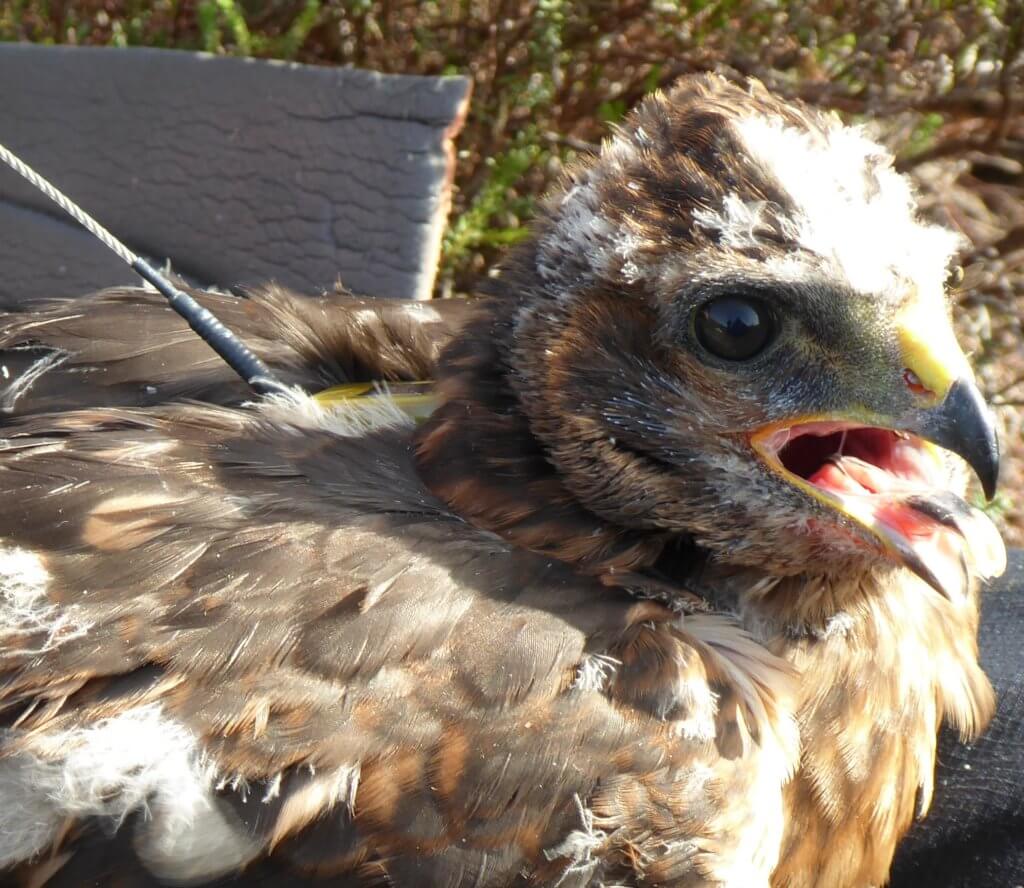Over 10 hen harrier chicks satellite tagged this summer

RSPB’s Hen Harrier LIFE project has fitted more than 10 young hen harriers with satellite tags this summer in Scotland. The EU LIFE funded project tagged birds from the Borders to the Highlands, with the generous support and assistance from of a variety of partners, volunteers, landowners, their managers and staff, and licenced taggers from the raptor conservation community.
Hen harriers are one of our rarest and most persecuted birds of prey. The satellite tags allow the project to follow the lives of the young birds as they strike out on their own. The last British Isles hen harrier population survey in 2016 put their numbers at just 575 territorial pairs, an overall significant decline of 24 percent since 2004. Estimates suggest there should be over 1,500 pairs of hen harriers in Scotland alone.
Before tagging the chicks the project monitors hen harrier nests to understand more about how their breeding success vary year to year and why they sometimes fail. Scotland is the stronghold for these birds in the British Isles with 460 pairs according the 2016 survey.
The information gathered from birds tagged in previous years has revealed important information about how the young birds spend their first few years of life. Two of the birds tagged in Scotland last summer headed over to Ireland for the winter before returning this spring. One of the chicks tagged this year is the offspring of a female tagged in a previous year by the project, providing an opportunity to follow the species through two generations.
The tags also reveal some worrying turns of events, with some birds either suddenly or inexplicably disappearing or being illegally killed – almost always on or close to grouse moors. Earlier this year RSPB Scotland appealed for information on the disappearances in areas managed for grouse shooting of two birds tagged by the project – Marci, tagged in 2018 at Mar Lodge and last recorded in the Cairngorms National Park near Strathdon, and Skylar, tagged in 2017 in Argyll who disappeared close to Elvanfoot. Rannoch, tagged in 2017, was found dead in an illegally set spring trap on a Perthshire grouse moor in May.
Dr Cathleen Thomas, Senior Project Manager for Hen Harrier LIFE, said, ‘It’s a real privilege to work with and follow the journeys of these incredible birds of prey and the sight of one of them skydancing never fails to take my breath away.
However, very few people get to experience such a spectacle as the British Isles are missing 80 percent of the breeding hen harriers they could support. These birds face enough natural challenges in their first few years of life trying to avoid predators and learn how to hunt without the added pressure of illegal killing, shooting and trapping by humans.
With Scotland the stronghold for the British hen harrier population, tagging these young birds here and understanding what is happening to them is crucial for our efforts to create a more secure long-term future for the species.‘.
An independent enquiry commissioned by the Scottish Government is currently undertaking a review of the environmental impact of grouse moor management and possible options for regulation. RSPB Scotland is calling for licencing of the industry to be introduced to bring an end to the continued illegal killing of birds of prey.

Ends
[registration_form]
And where did they come from and where will they live? On managed grouse moors you sad little man!
So William you claim they come from (I presume you mean that they nested successfully) managed Grouse Moors? So exactly how many successful Hen Harrier nests have there been on a managed Grouse Moor in England and Scotland in the last two years?
Obviously if it was a significant number then those who own and manage these Grouse Moors would be publicising this as it would disprove the evidence that in actual fact Hen Harriers don’t breed or live very successfully on or even near managed Grouse Moors.
As for Hen Harriers living on a managed Grouse Moor, well thats a little difficult to claim, as out of the breeding season they roam far and wide. However what is known from satellite tags is that a significant number do die on or near managed Grouse Moors and lets not forget that we don’t know the actual mortality rate as not all Hen Harriers are tagged.
In Orkney where there is no managed grouse shooting, it is very common to see Hen Harriers on moorland and they have a high level of breeding success. In England and Scotland I can count on the fingers of one hand the times I have seen a Hen Harrier on a managed Grouse Moor.
The evidence and the pattern of deaths more than strongly suggests a correlation between Grouse Moors and Hen Harrier mortality, so I’m not entirely sure its Mark who is the “sad little man”!